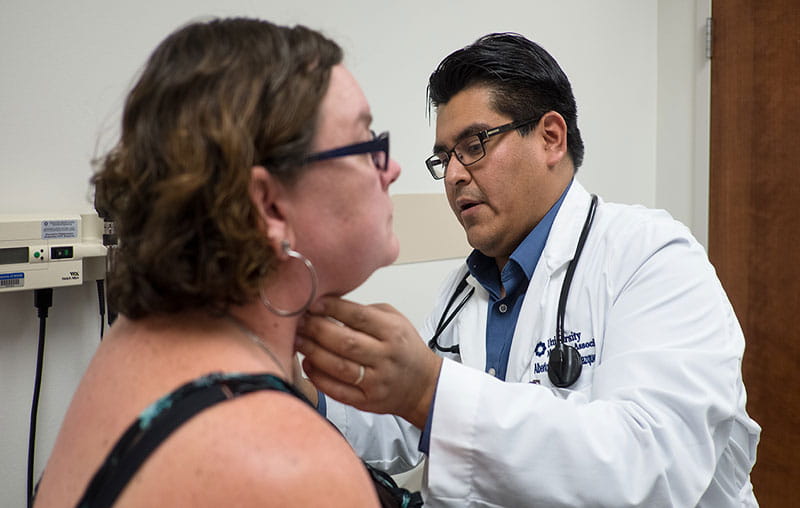Editor’s note: This post first appeared in Alamo City Moms Blog.
At University Hospital, we see kids brought to our emergency department for out-of-control asthma attacks that can require admission to the hospital—including the ICU. In fact, asthma is one of the top five reasons children are admitted to a hospital.
Asthma is a chronic disease in which the airways in the lungs become swollen and inflamed. When something triggers asthma, the inflammation gets worse, causing coughing, wheezing and shortness of breath.
Asthma action plan
By developing an asthma action plan with your child’s physician, you can lower the chances of needing to visit the hospital in the first place.
Asthma action plans—which are organized by the colors of a traffic light—list the steps that should be taken when the child is: breathing normally (green), when he or she is having symptoms (yellow), and when those symptoms aren’t responding to medications (red).
Keep your child out of the ER
Medications
Typically, your child will get two different medicines to control asthma. The first is taken daily to prevent symptoms. The second is a quick-relief medicine when the child is wheezing or has difficulty breathing. Your doctor will also want to treat other conditions that can worsen asthma or interfere with treatments.
Triggers
Common things in the environment can trigger or worsen asthma symptoms. It’s important to know what triggers your child’s asthma in order to recognize and avoid them.
Examples can include:
- dust
- pollen
- air pollution
- molds
- cigarette smoke
- pets
While exercise can be a trigger for some kids, the health benefits of physical activity far outweigh the risks. Your doctor can discuss medicines that can prevent exercise-induced asthma symptoms.
Symptoms
Wheezing, tightness in the chest, shortness of breath and coughing are tell-tale signs of an asthma attack. Coughing often occurs at night or early in the morning, and some parents don’t immediately associate coughing with asthma. But a nighttime cough is a sign of spasms in the airway as a result of inflammation and secretions.
Spacers
In recent years, spacers have become more common in the management of asthma. These resemble a clear water bottle that attaches to the inhaler, with a mouthpiece on the other end.
This device makes inhalers a little less inconspicuous (but easy to carry in a purse and clean in the dishwasher). However, it makes sure that the entire dose of medicine reaches the child’s lungs in just a few breaths.
Studies have shown that the medication particles can escape into the air or just reach the back of the throat when using the inhaler by itself.
Peak Flow Meter
These hand-held devices measure how well your child’s lungs are functioning. Tracking your child’s peak flow scores can tell you how well the asthma is being controlled, and even predict an attack before symptoms appear.
You might also want to keep a journal of your child’s symptoms to see how well treatment is working.
Children's asthma care at University Health
At University Health, we’ve created a streamlined asthma program to help our patients and have organized an ACCT, or Asthma Coalition for the Community Team.
Most of our clinics follow an asthma protocol so if a child comes in with asthma symptoms, a course of treatment can be prescribed. This protocol starts with an exam, after which your child will be given a clinical respiratory score, or CRS. This score is based on a number of factors such as oxygen saturation, breathing rate, symptoms and so on.
Their clinical respiratory score determines the course of treatment. A child with a high score might begin with a more aggressive course of treatment than another child whose score is low. If the child does have to go to the emergency room for an asthma attack, the clinic staff will inform the hospital what the child’s CRS score is and what treatment has already been given, allowing for streamlined care.





